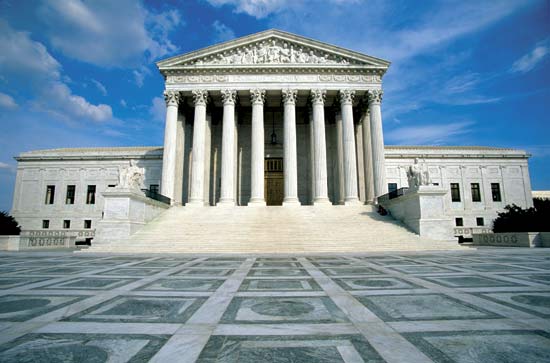This article originally appeared in The Hill.
Some of the Supreme Court’s decisions this term will show why the media’s division of the justices into “liberals” and “conservatives” is deceptive.
If one wants to divide the justices two ways, it would be more accurate to distinguish them as traditional judges or liberal activists. Five justices decide cases more or less in the Anglo American tradition of judging. Their results are sometimes “conservative” and sometimes “liberal.” The other four justices reach liberal results more uniformly, even when that requires breaking the normal rules of judging. At one time there were Supreme Court justices whom you could classify as conservative activists, but this has not been true for many decades.
Even restated as “liberals vs. traditionalists,” the two-fold division is not really accurate. The liberals usually vote together, but not always: Sonia Sotomayor split with Ruth Bader Ginsburg this month in voting to keep the Supreme Court out of an election ID case. Elena Kagan and Stephen Breyer have shown themselves willing to join decisions the media calls “conservative” when the grounds are sufficiently narrow.
More importantly, the five traditionalists are deeply split among themselves. The divide is largely about how much weight to give to case precedent vs. the Constitution’s original understanding vs. judicial deference to democratic legislatures.
One of the cases that may highlight the inaccuracy of the “liberal/conservative” canard is Gamble v. United States. The Fifth Amendment states “nor shall any person be subject for the same offence to be twice put in jeopardy of life or limb.” This is the Double Jeopardy Clause, which (with some exceptions) prohibits prosecution of a person previously prosecuted for the same offense. The courts have read into the Clause a “separate sovereigns exception.” What this means is that a federal prosecution does not insulate a defendant from a future state prosecution, and vice versa — because federal and state governments are separate sovereigns.
The separate sovereigns exception is firmly embedded in precedent: It has been part of American constitutional law for roughly 150 years. But it may well conflict with the original Constitution’s meaning of “twice put in jeopardy.” Liberals have loudly invoked precedent when defending the 45 year old abortion decision, Roe v. Wade. So you might expect liberal groups to argue for retaining the 150 year old separate sovereigns exception.
But that would be to overlook political hypocrisy. Liberals had no trouble urging the court to overturn millennia of precedents against same-sex marriage. In the Gamble case, a collection of mostly liberal organizations have filed advisory briefs arguing for reversal of precedent and a return to the Constitution’s original meaning. They even cite old English cases in the same way as we stodgy originalists do.
Media stereotypes would encourage us to expect a 5-4 decision upholding the separate sovereigns exception. On the winning side would be the “conservatives” of John Roberts, Clarence Thomas, Samuel Alito, Neil Gorsuch, and Brett Kavanaugh. After all, conservatives are pro-law enforcement, right? In dissent would be the four liberals of Ruth Bader Ginsburg, Stephen Breyer, Elena Kagan, and Sonia Sotomayor — because, according to this theme, liberals are pro-defendant.
But that kind of split is unlikely in the Gamble case. The more traditional justices differ significantly in their legal methods and often reach liberal results. For example, Chief Justice Roberts believes in deference to the legislature, which led him to vote to uphold the Affordable Care Act’s individual health insurance mandate — a liberal result. Justice Thomas is committed to originalism, which led him to vote to uphold the prerogative of states to legalize medical marijuana — another liberal result.
Indeed, Thomas is still the Supreme Court’s sole consistent originalist: In a recent case, only he disputed the dubious claim, asserted by both the majority and the dissent, that Congress could use the Commerce Power to regulate all gambling nationwide.
Thus, the Double Jeopardy case could well be decided in a way that defies the opinion molders. Perhaps we’ll see Ginsburg, Sotomayor and Thomas on one side with Roberts and Kavanaugh on the other, with the remaining justices wielding the balance of power.
The point here is that asserting that a majority of justices are “conservative” is positively misleading. As this Supreme Court term will demonstrate.









